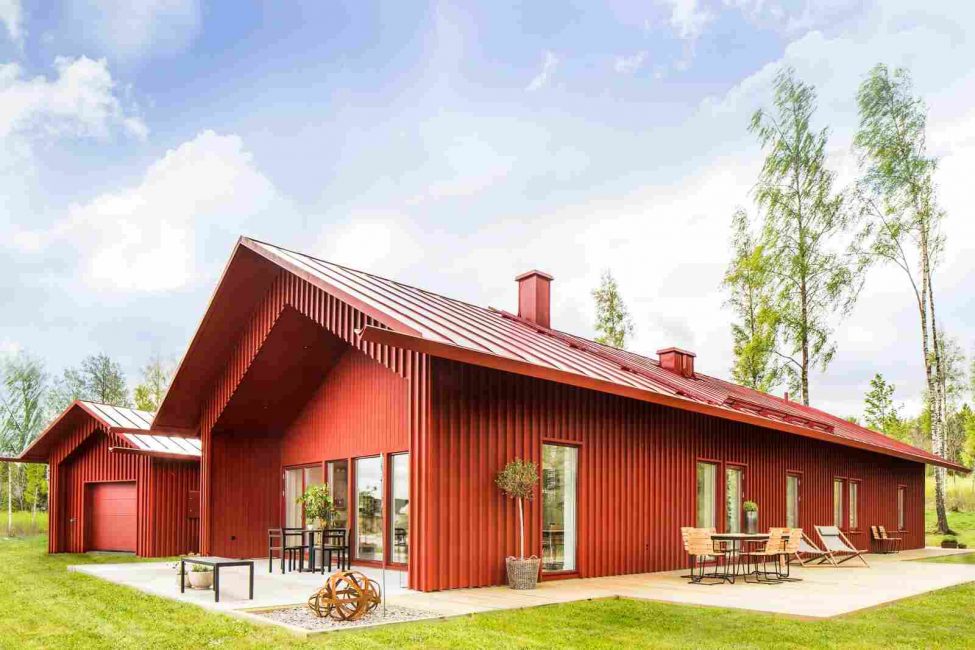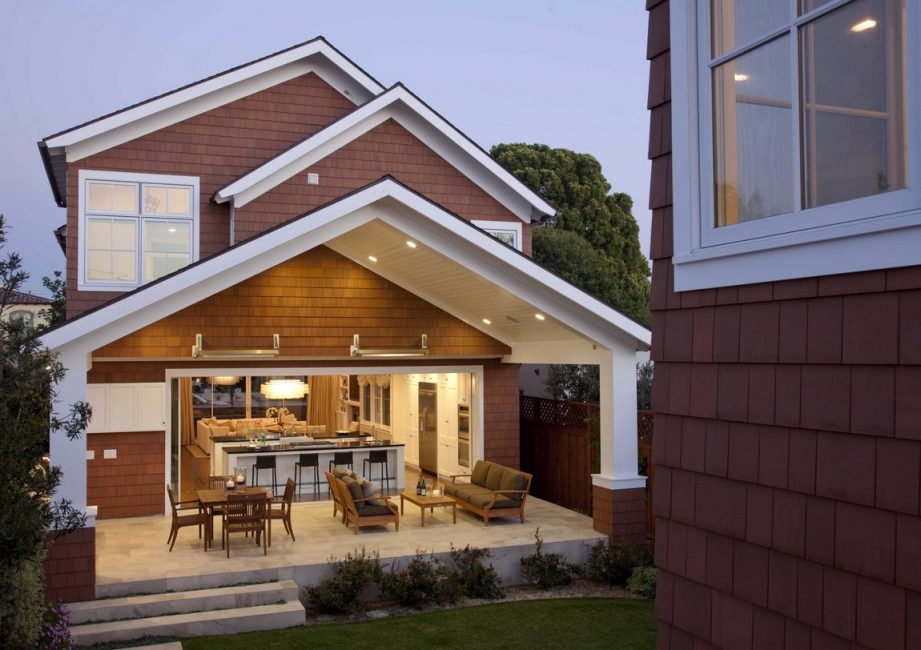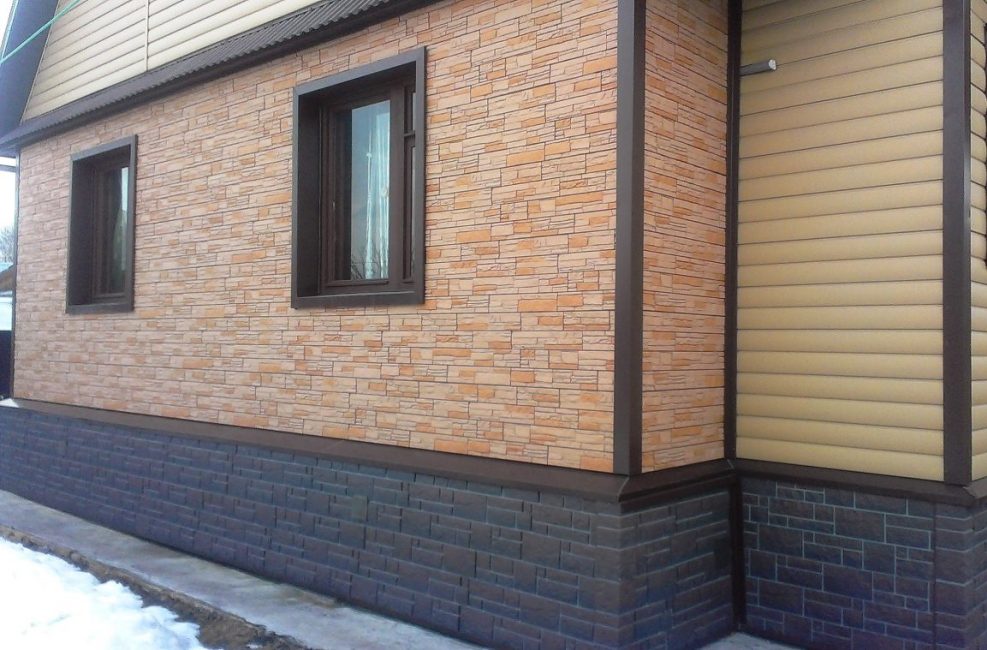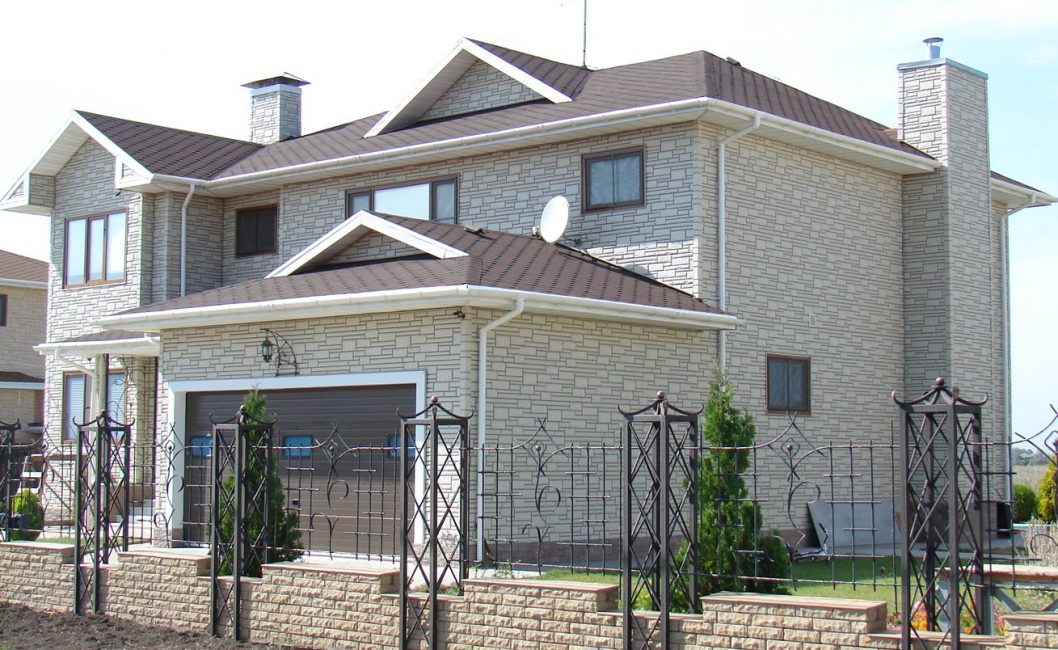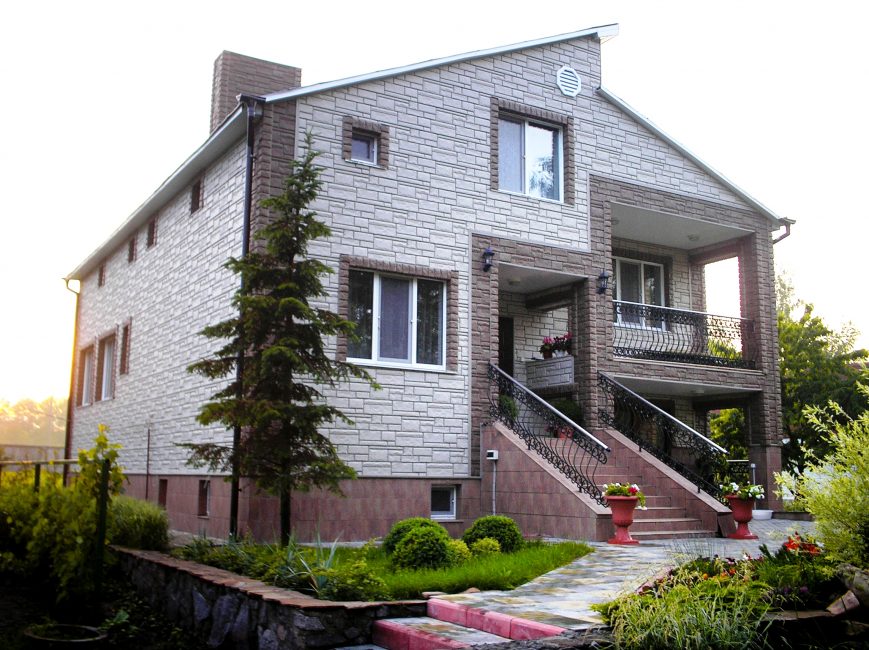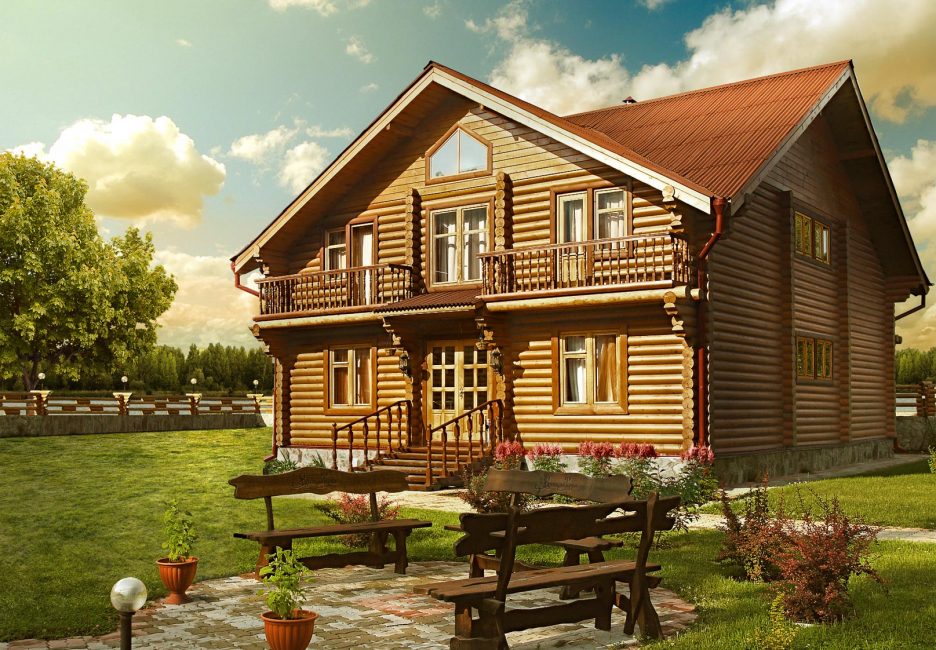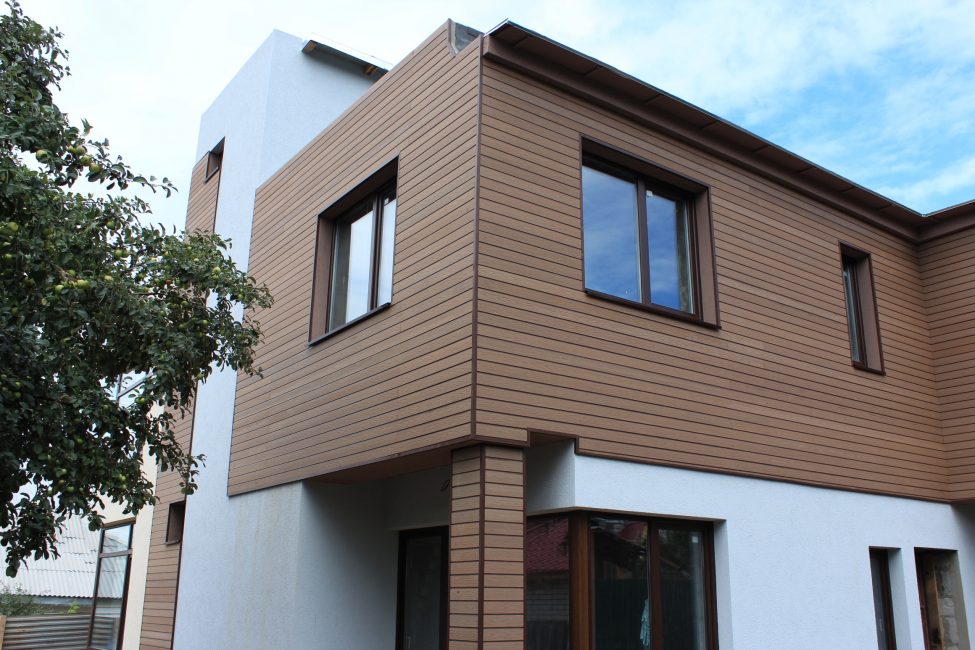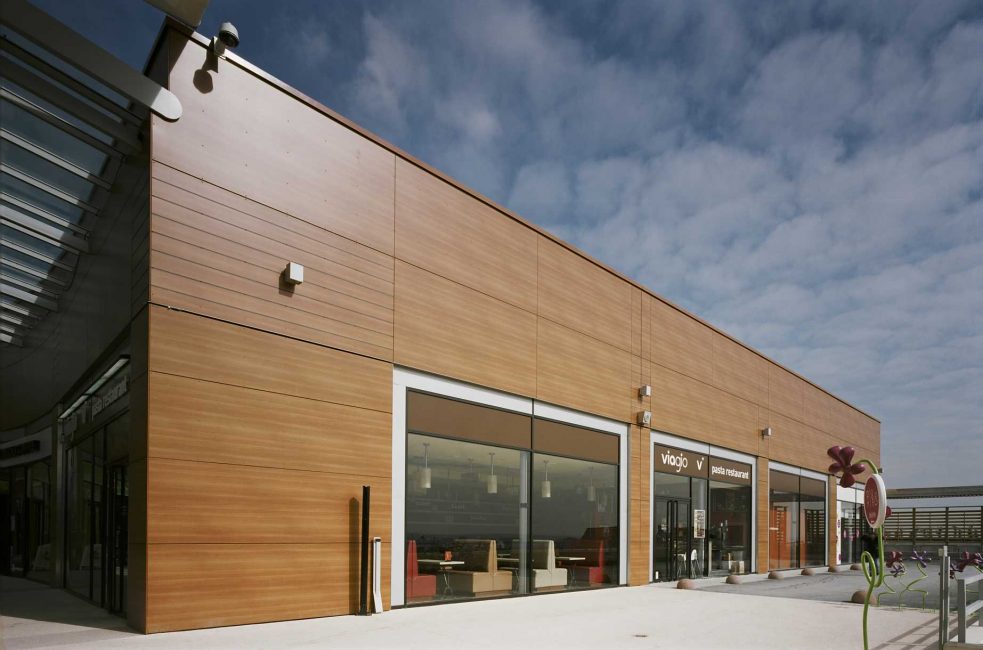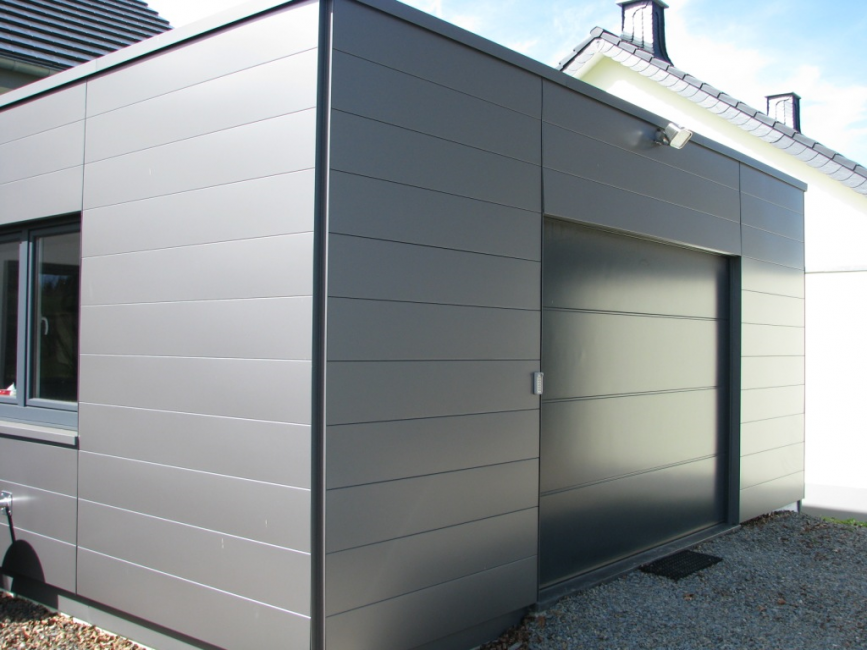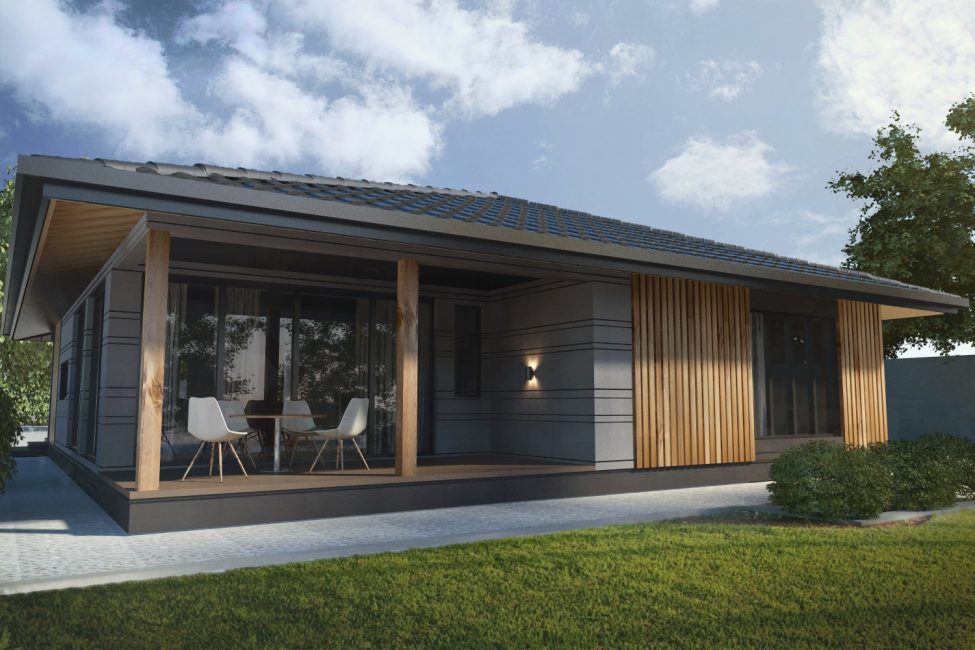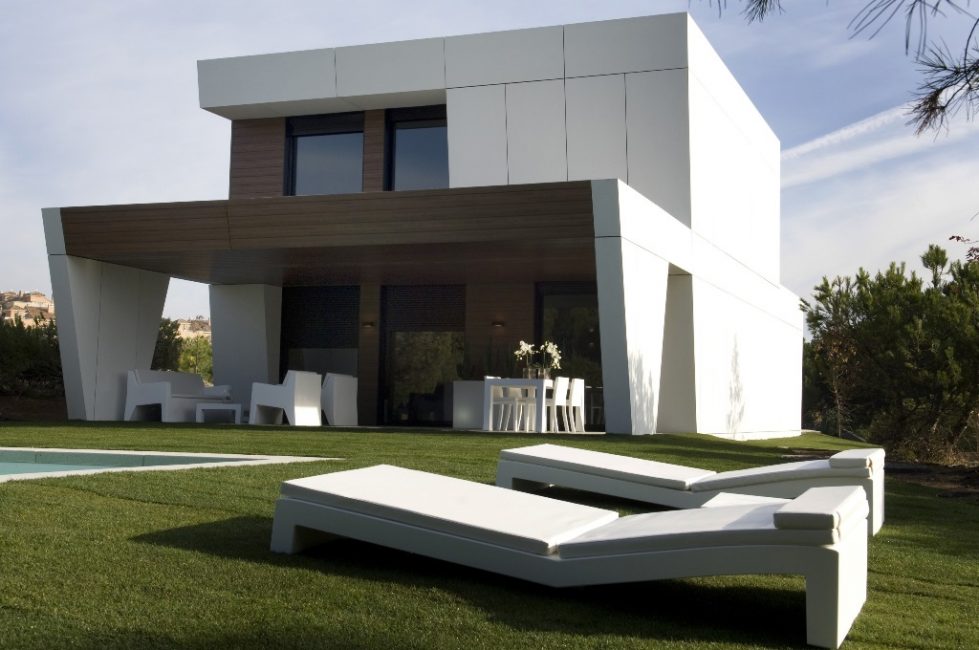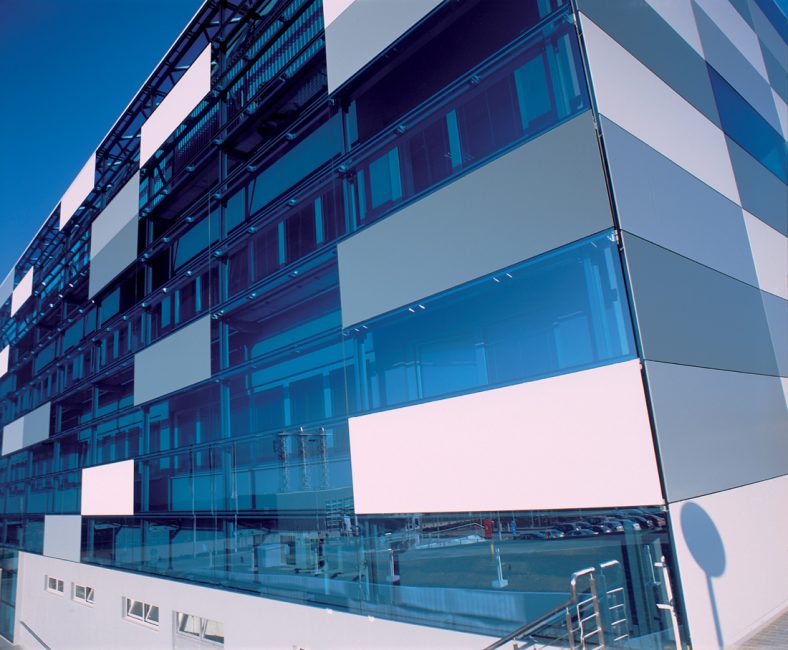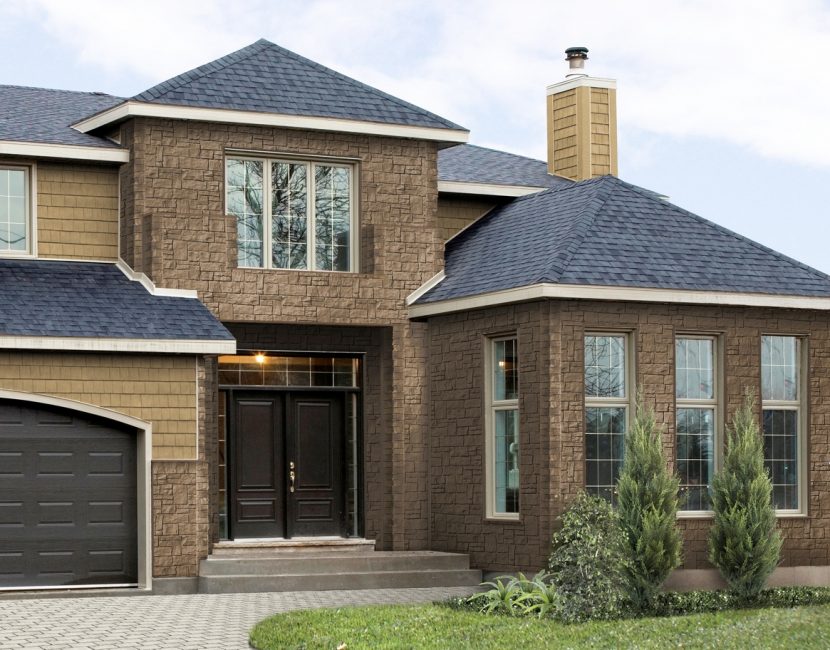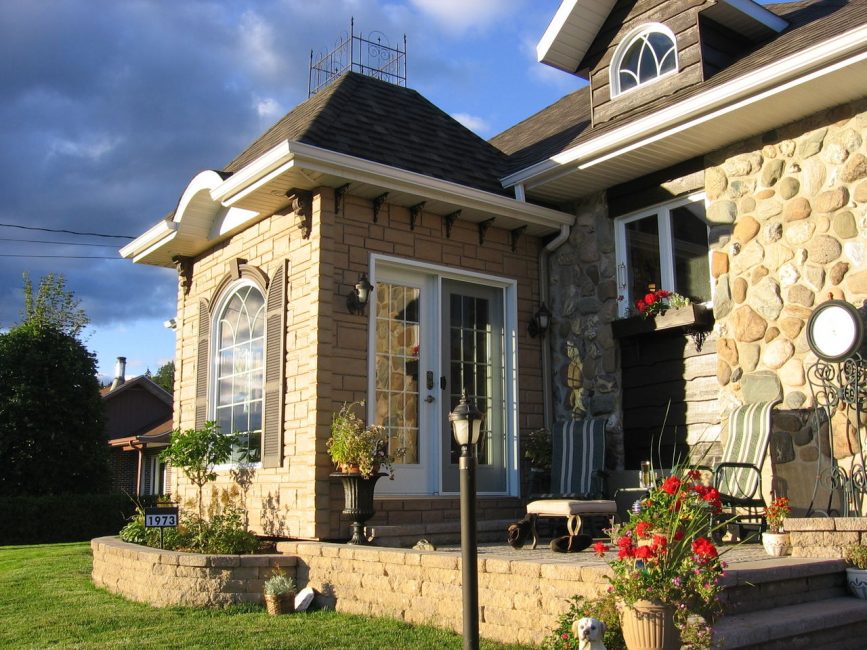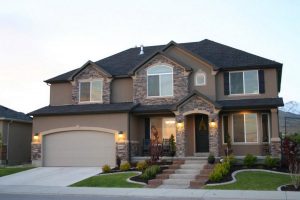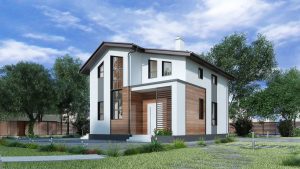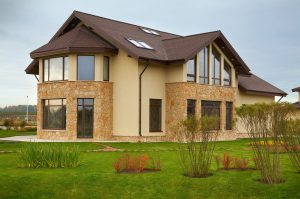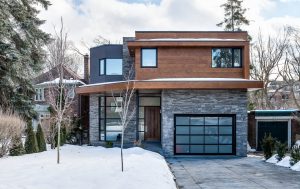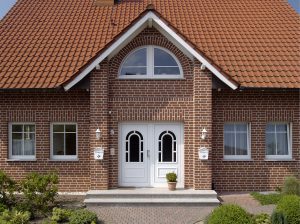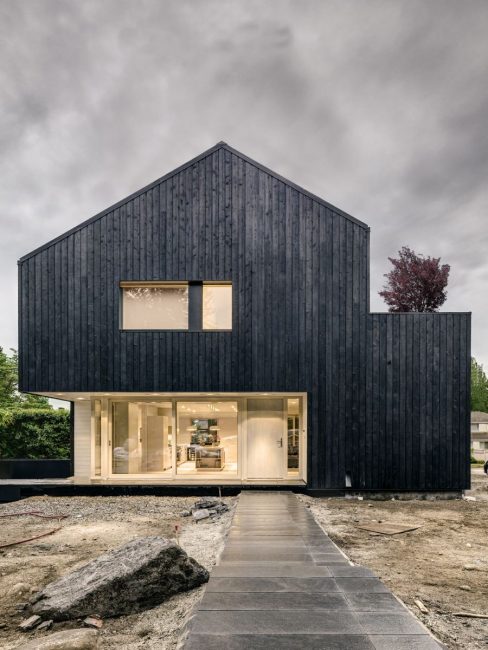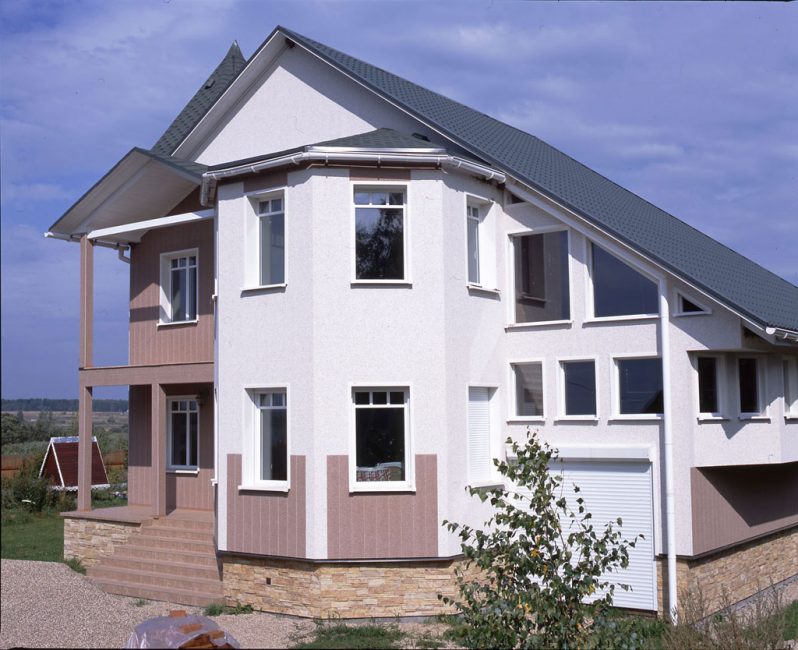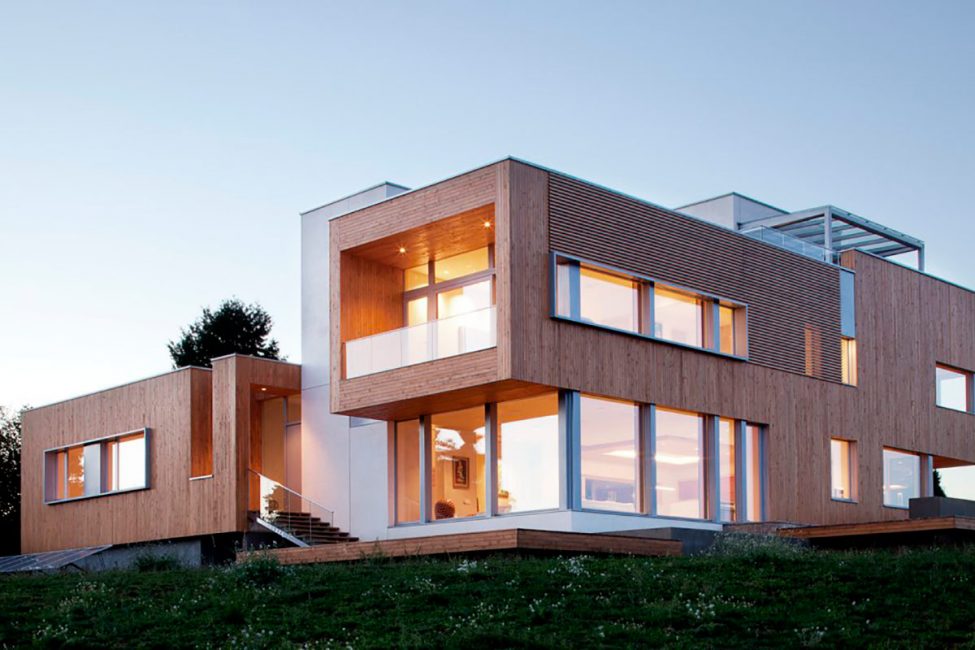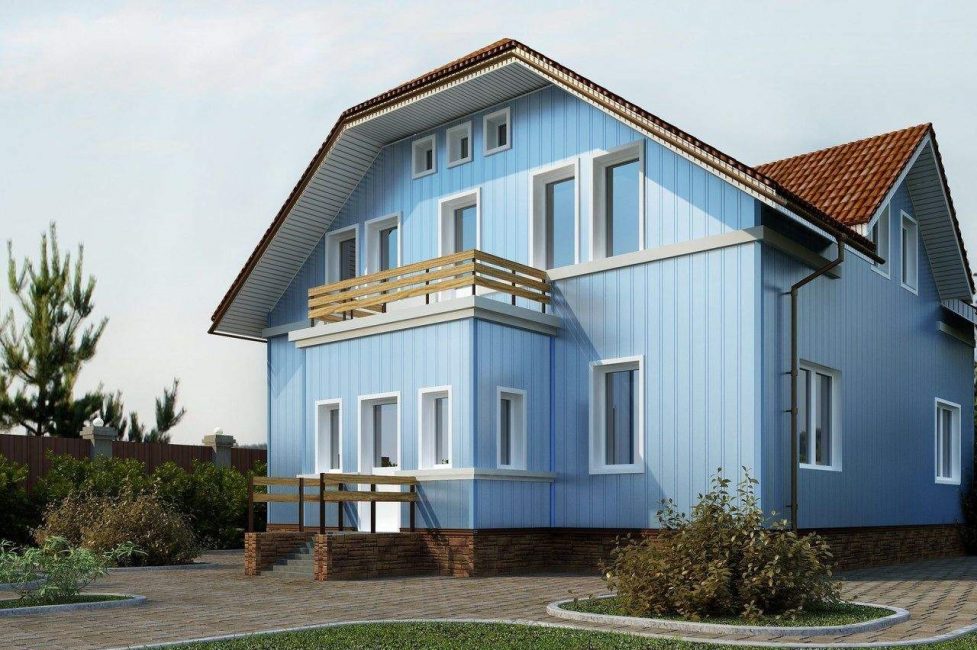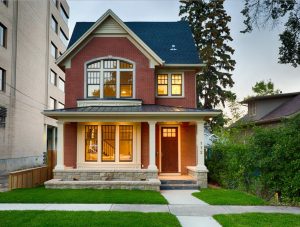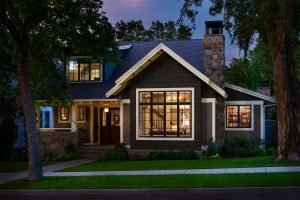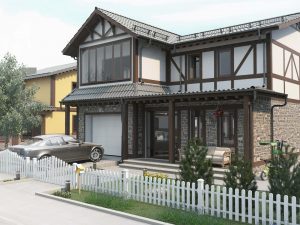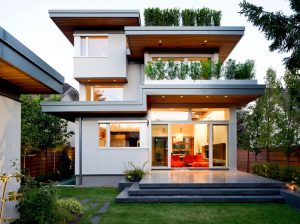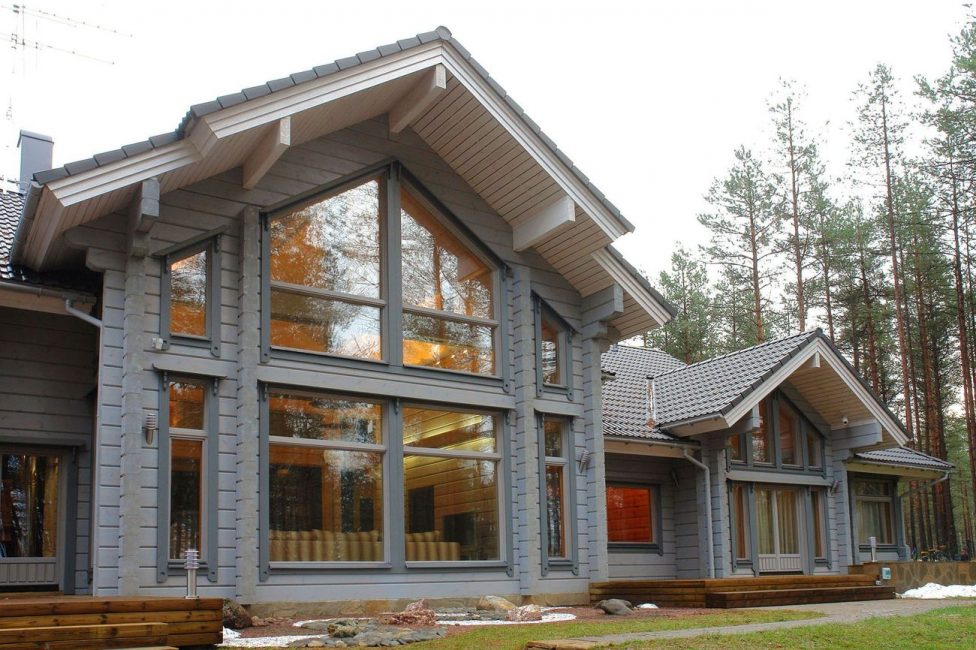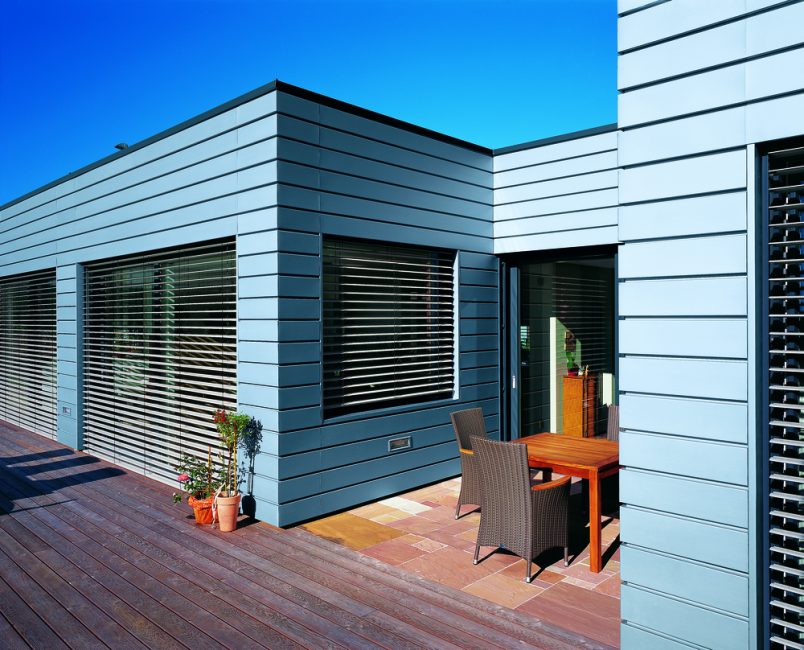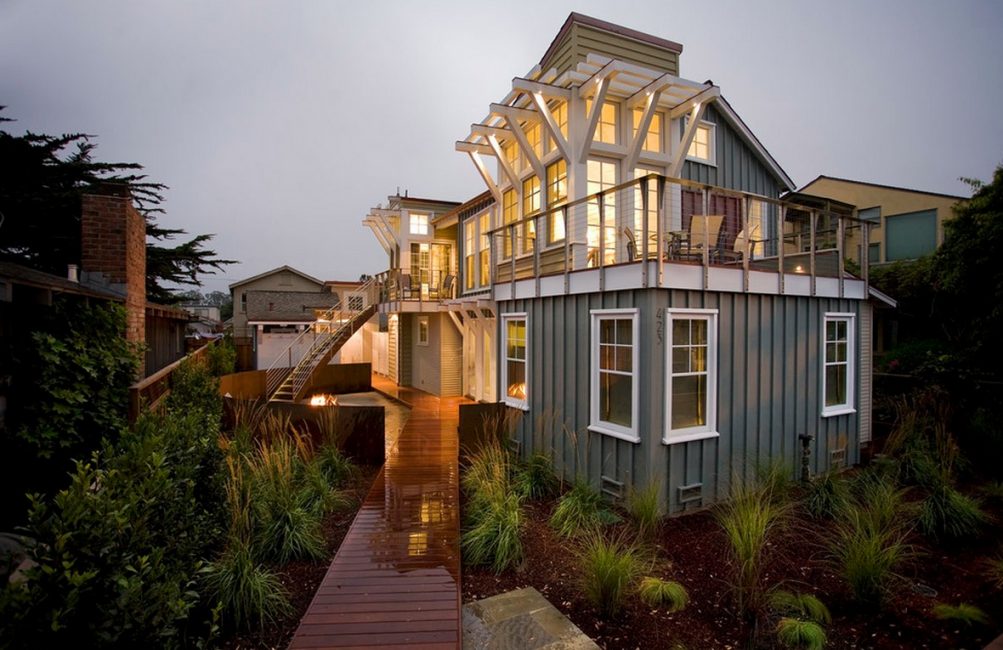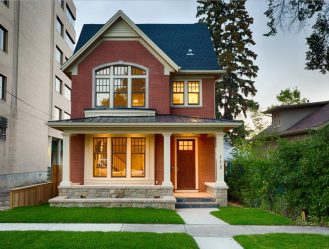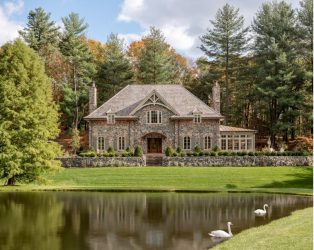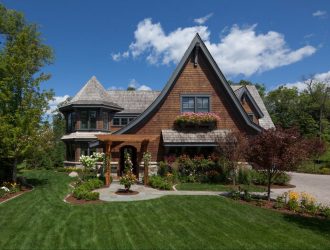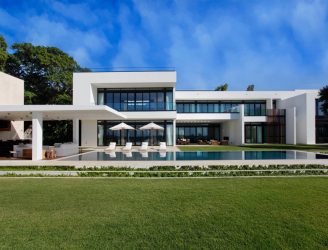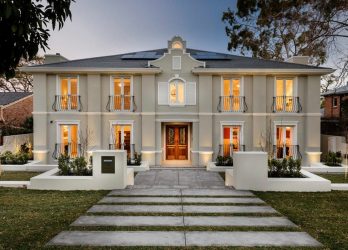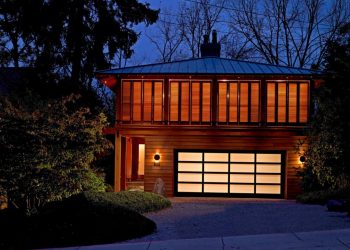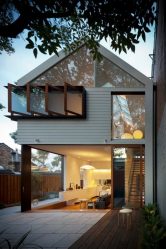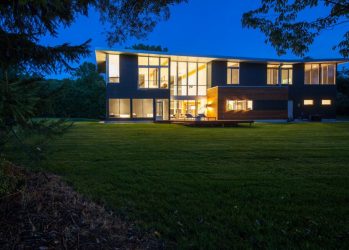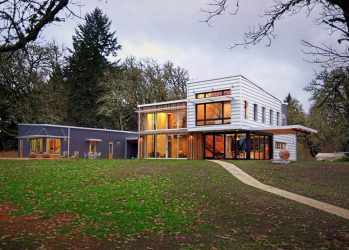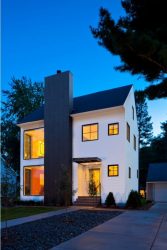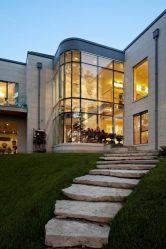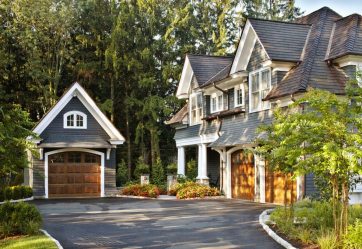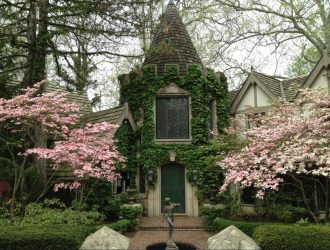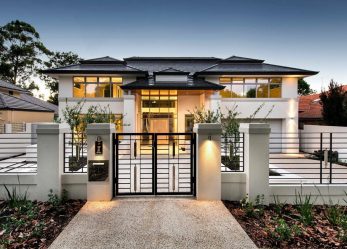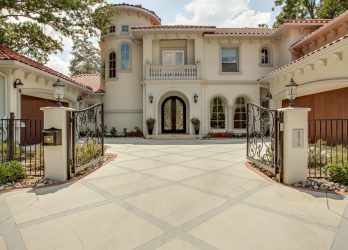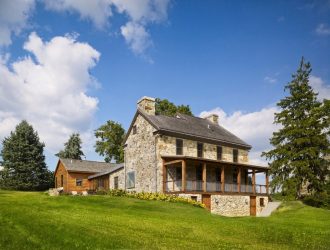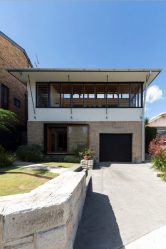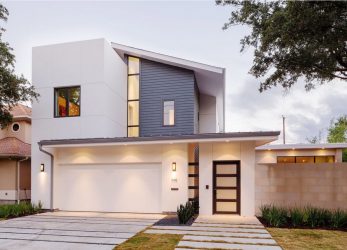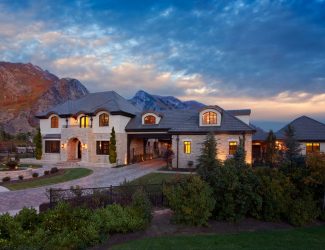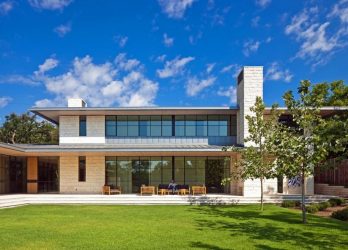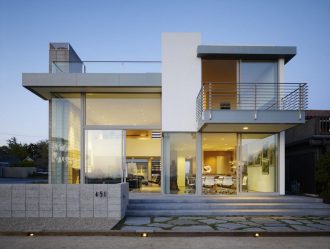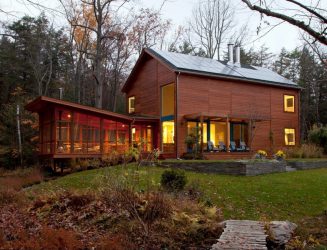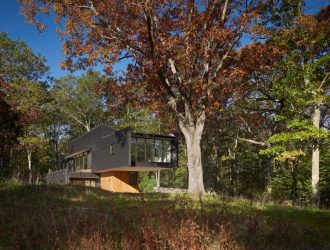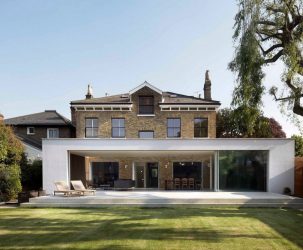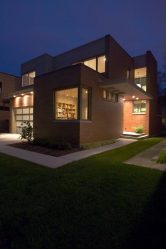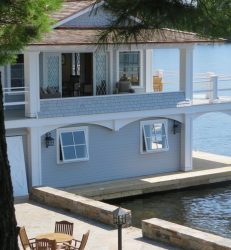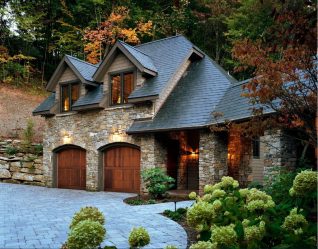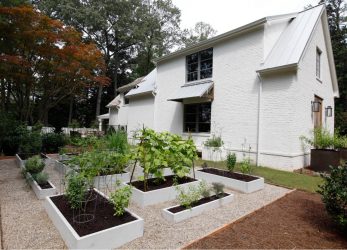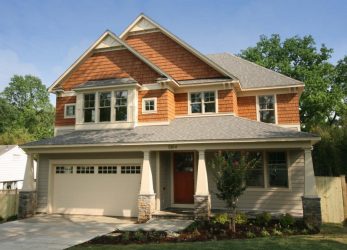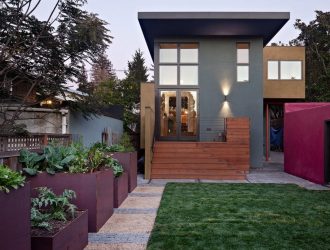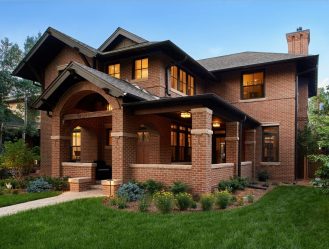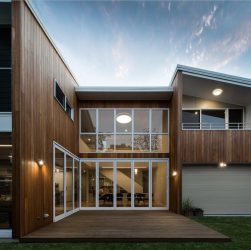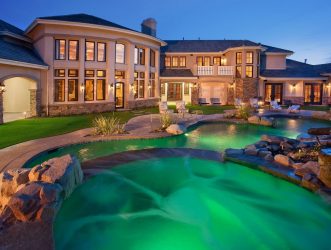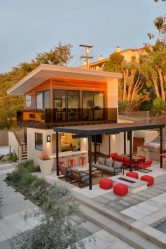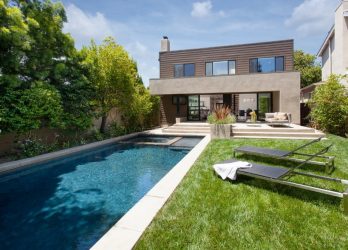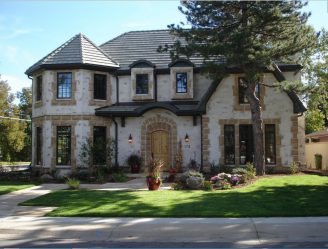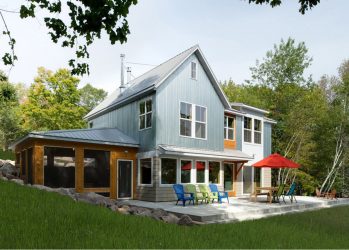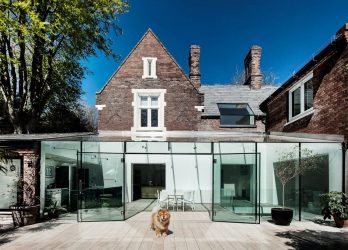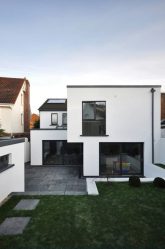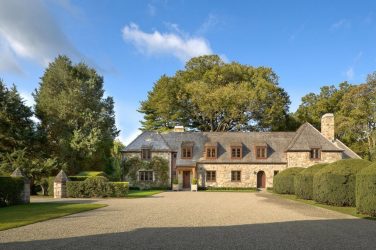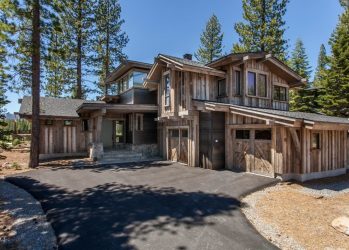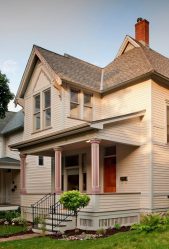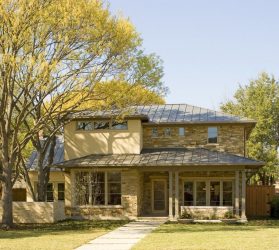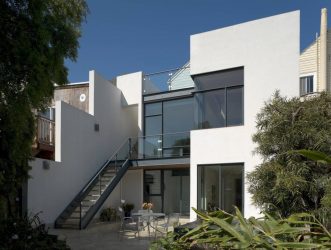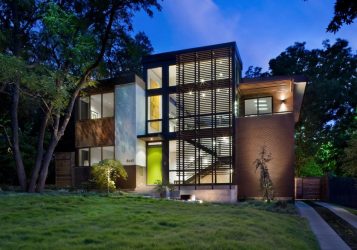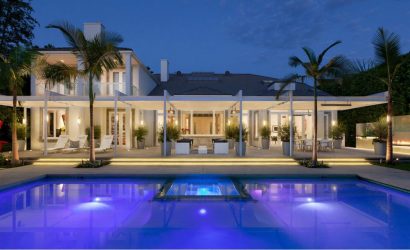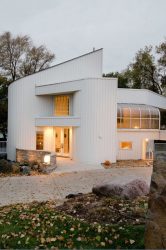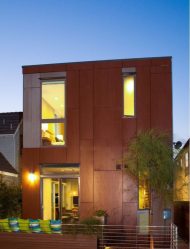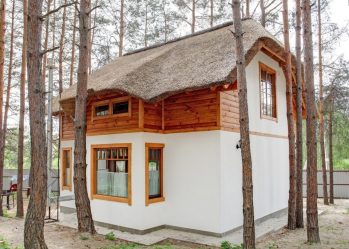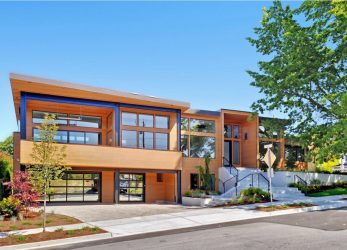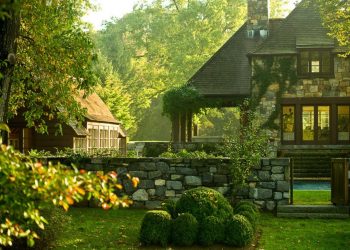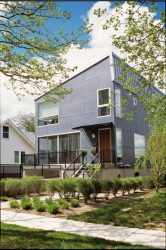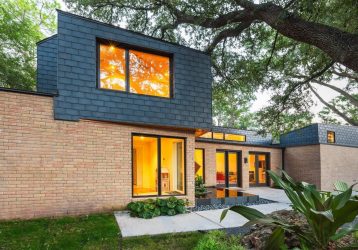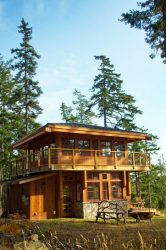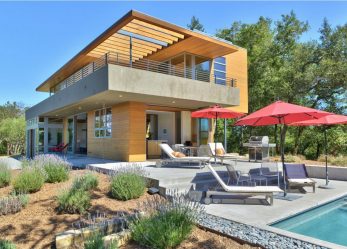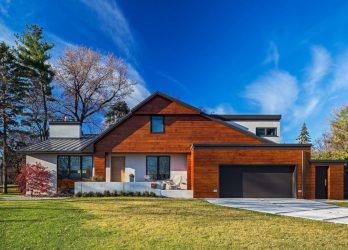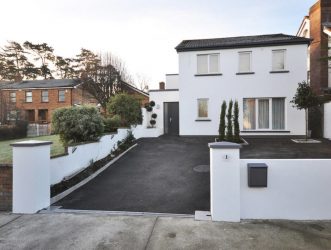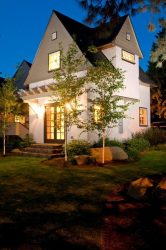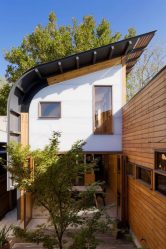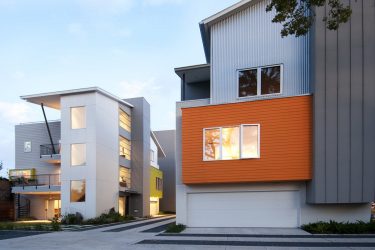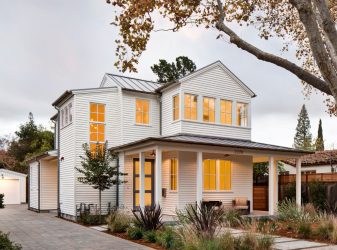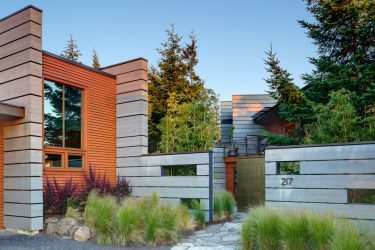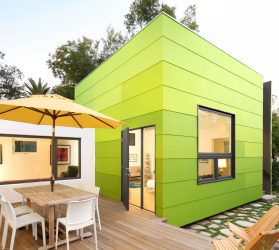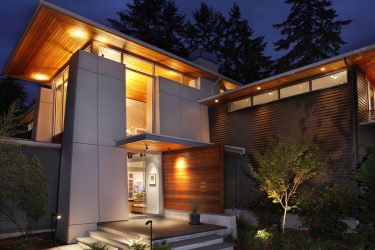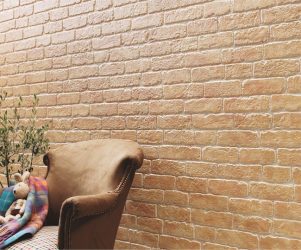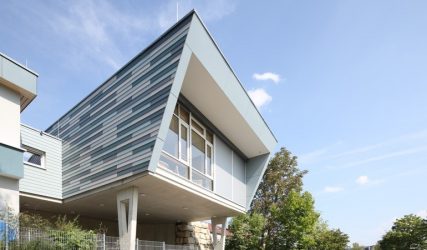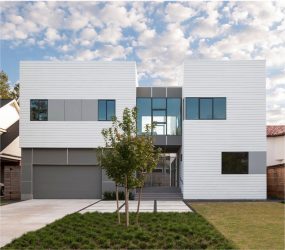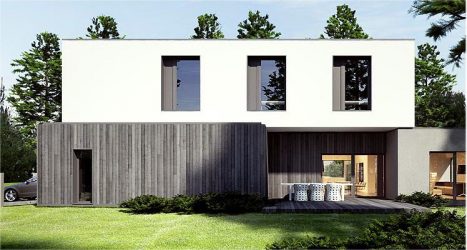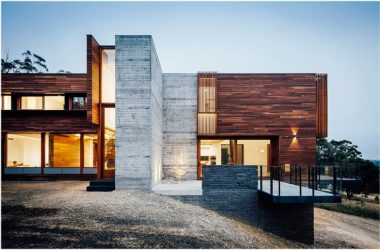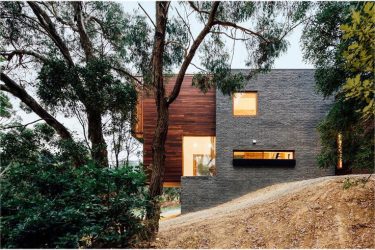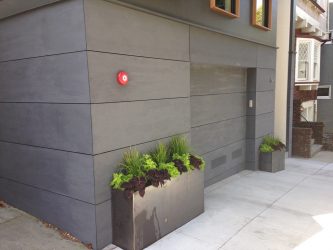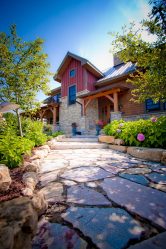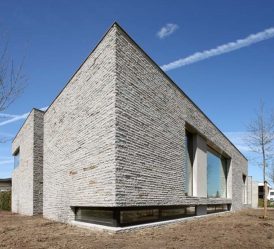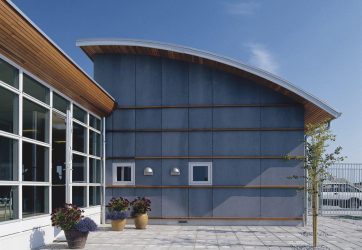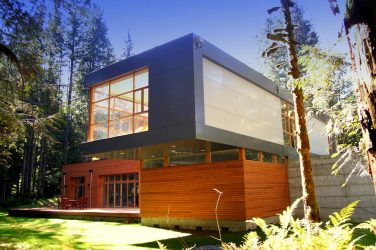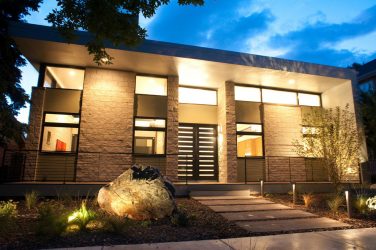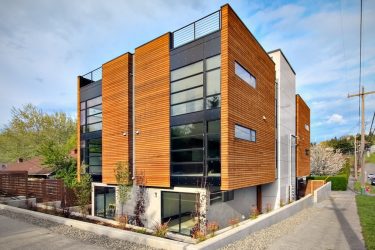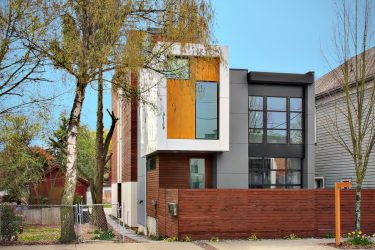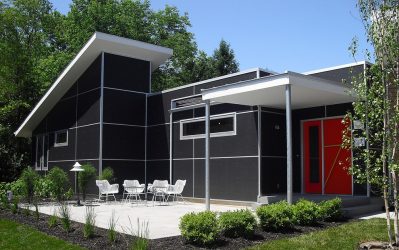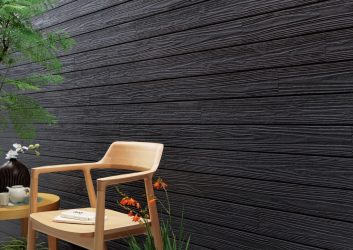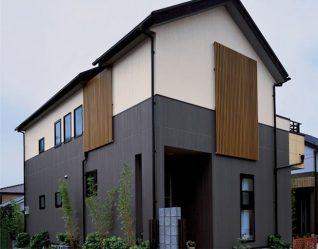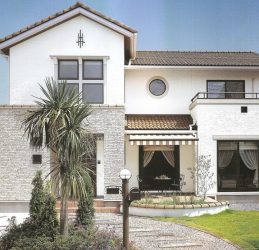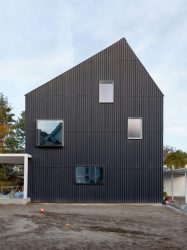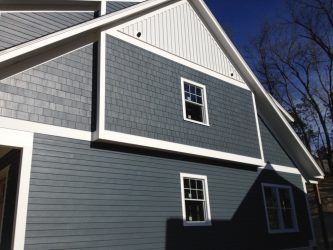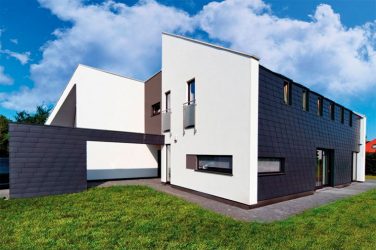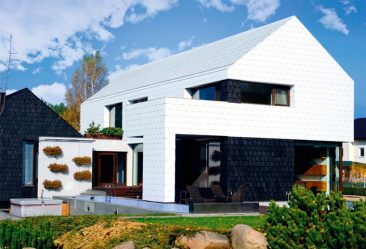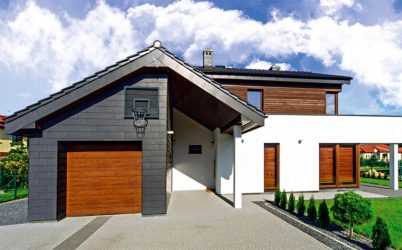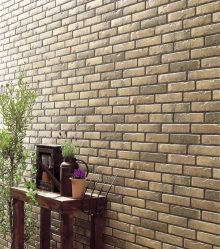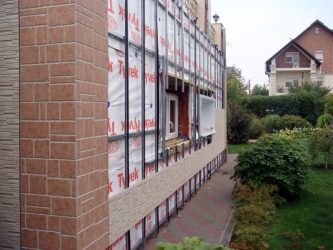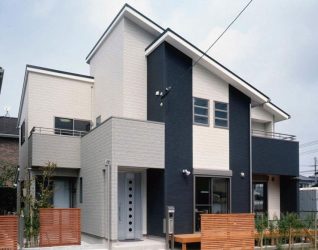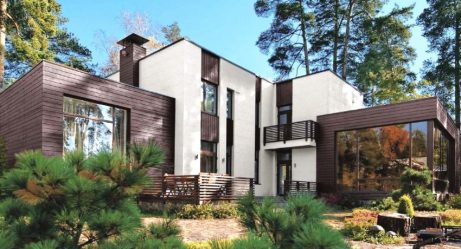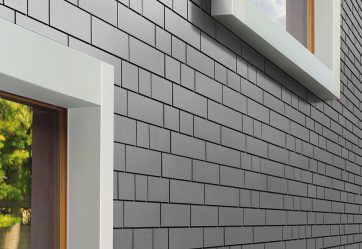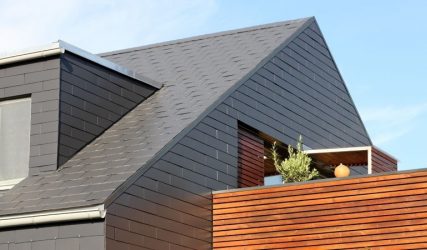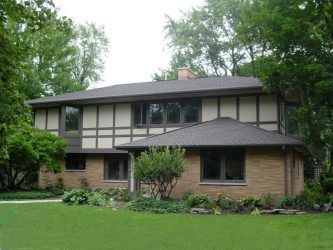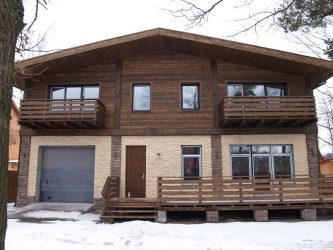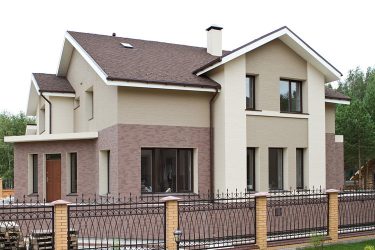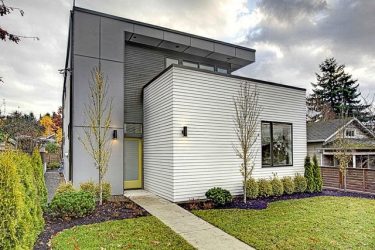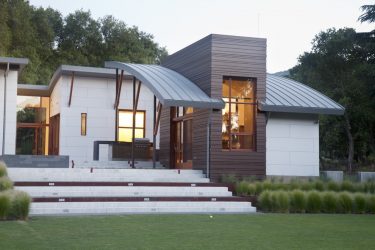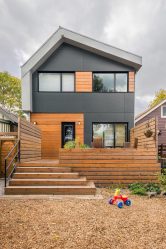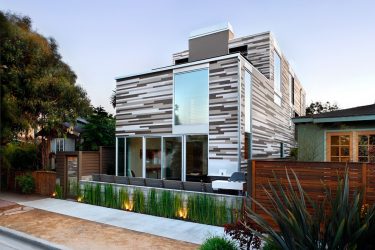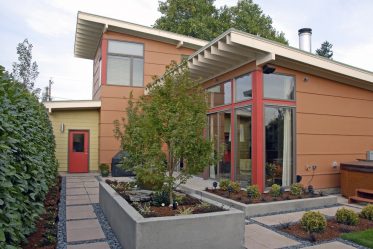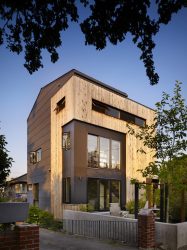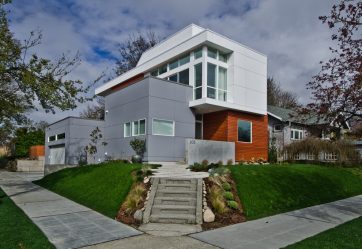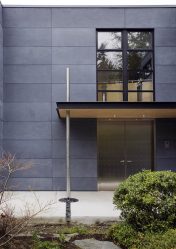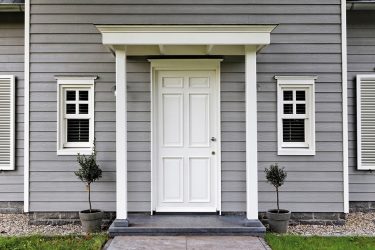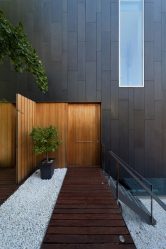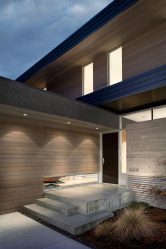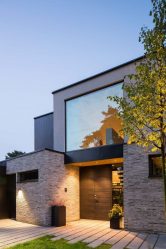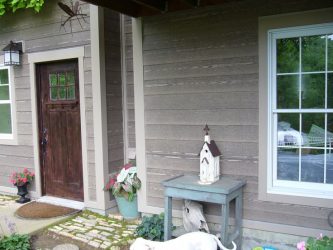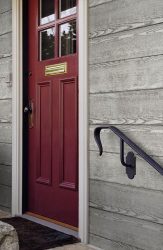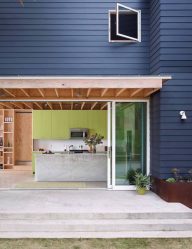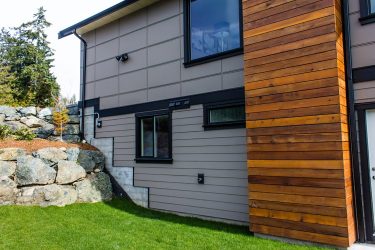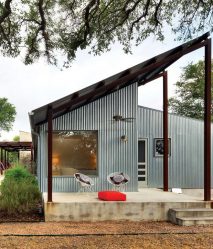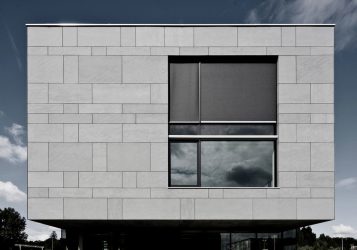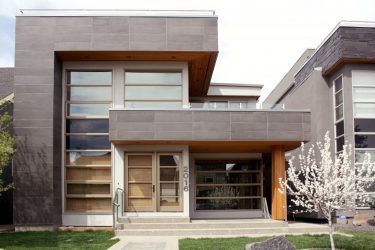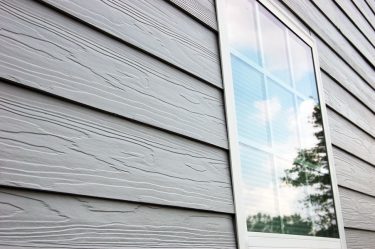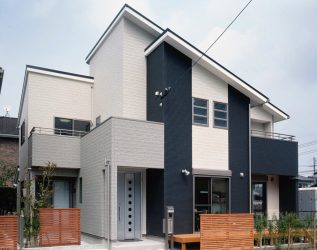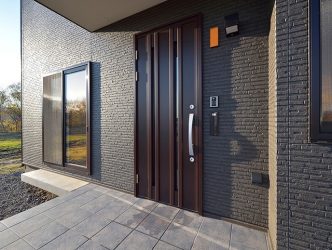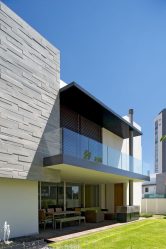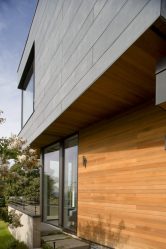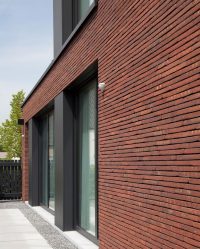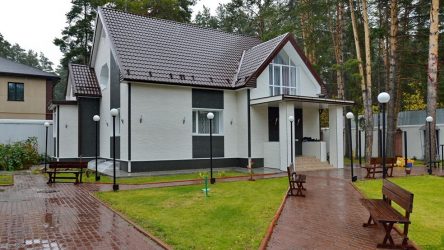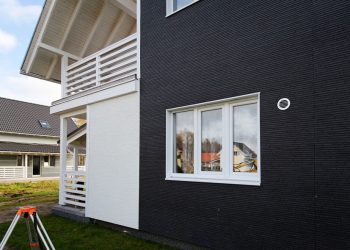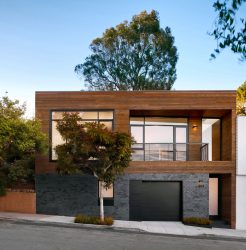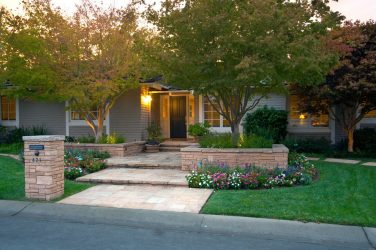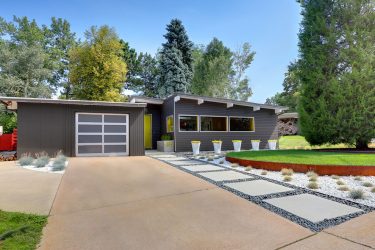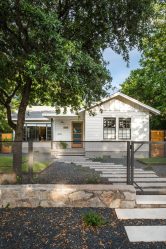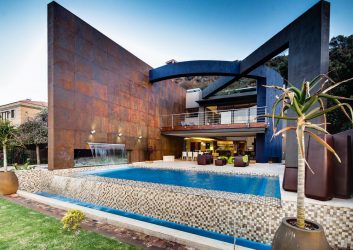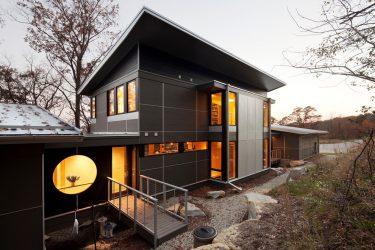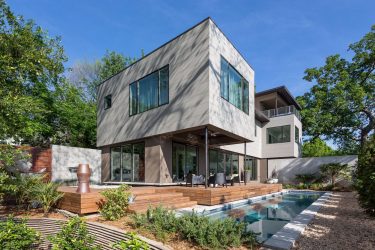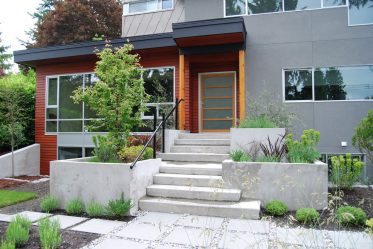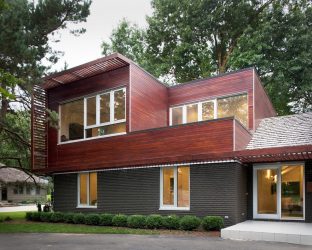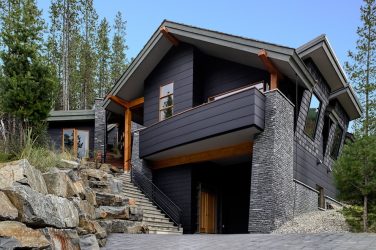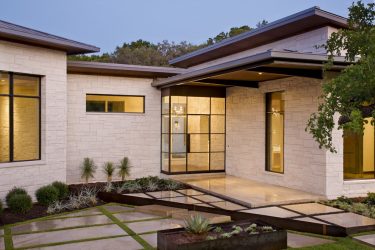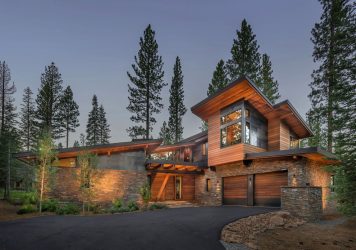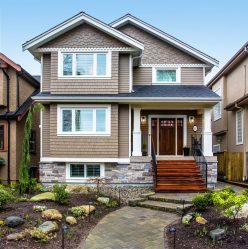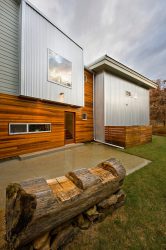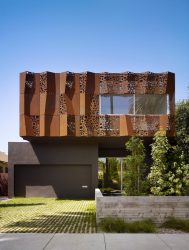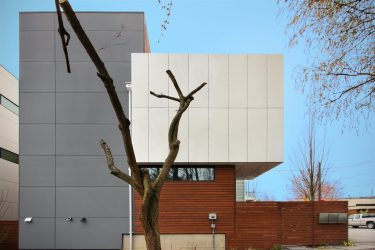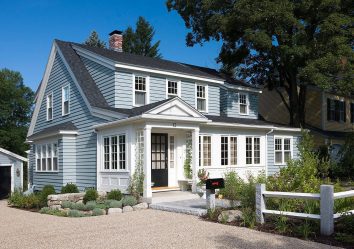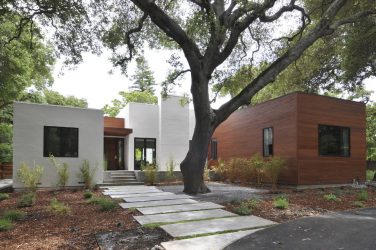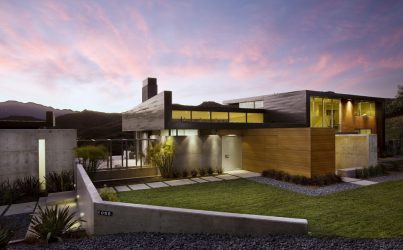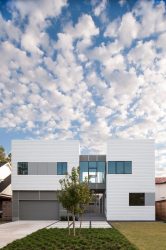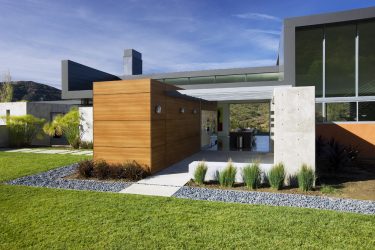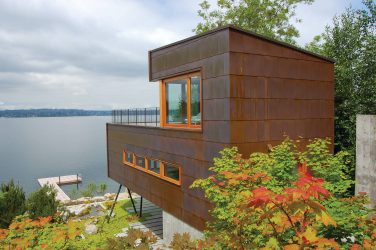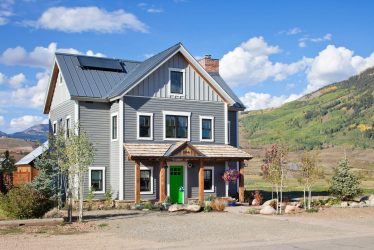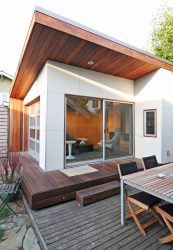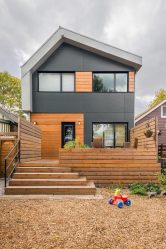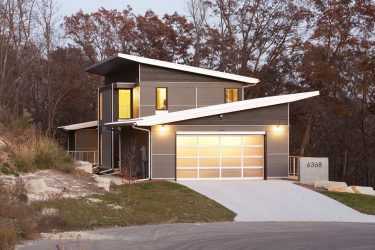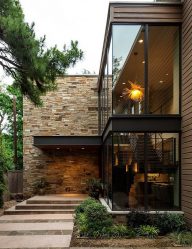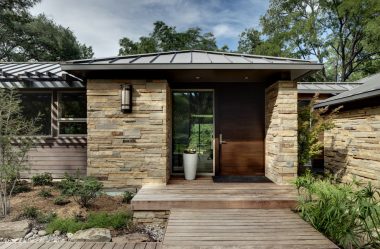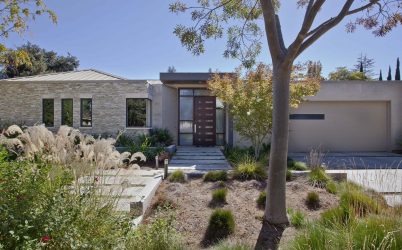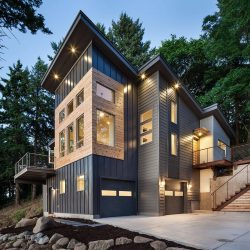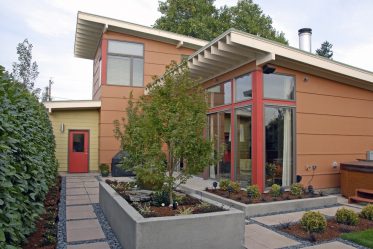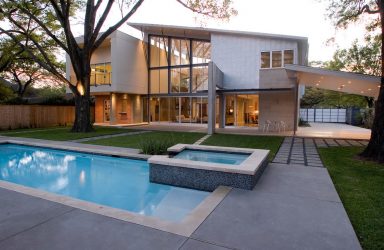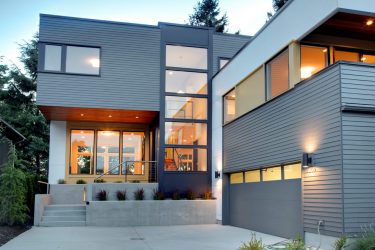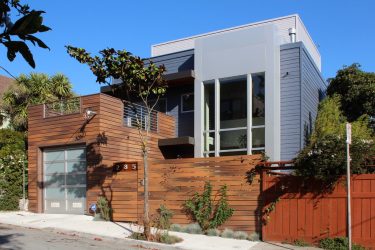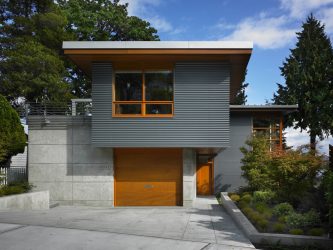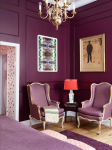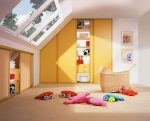
Facade panels, photos of houses with which can be found in abundance on the Internet, have proven themselves well in recent years. Their variety is very large. We will get acquainted with them in this article in more detail.
Content:
This is a beautiful, convenient solution - they are mounted easily as a designer, protect house from moisture and the effects of precipitation, save heat, create a unique design. There are many of them - from metal, stonevinyl glass. From cement and woodfinished under brickunder the same tree, suitable for plastering them.
But in order for all the advantages to manifest, you need not to veneer the house with any by panels, and those that are best for him. They must be made of a suitable material first.
PVC Facade Panels
Polyvinyl chloride (PVC) is the most common material for panels. Its main characteristic is the low price - laid on the lining of the house, may be small.
PVC has advantages:
- Diversity. Like any plastic, PVC can be given any color, any texture. Patterned panels, panels made under natural wood or stone, brick or glass, multi-colored and with drawings - among PVC there are panels for every taste. With their help, you can make any design without thinking that the tree is rotting, the stone is too heavy - it is enough to find a good imitation.
- Ease. PVC is the lightest material available. This is a big plus, since its weight will withstand even the thinnest walls and no calculations will be required. In addition, you can deliver purchased PVC panels to your home by your own.
- Resilience. They are not afraid of water, biological irritants, mechanical effects, they retain their original shape well. Rodents and parasites cannot spoil them, they do not melt in the heat (if you do not buy a low-quality segment), they do not need any care.
- Easy installation. Because of the weight and because of the ease of attachment, even a person who has never tried repairing will cope with PVC. And if something does not work out - or if the panel is damaged later - you can always replace it with another one, the same one. It does not cause any special damage to the budget.
The advantages are balanced by minuses:
- Thermal expansion. Installed panels with time, under the influence of heat, can expand and go in waves, completely destroying the entire design. But this behavior is typical for PVC with low quality.
- Lack of frost resistance. In the cold, PVC becomes brittle, a light blow may break or bend it, therefore it is not recommended to carry out installation in cold weather, and in the winter it is better to exercise caution.
- Lack of resistance to fire. In case of fire, the panels will not light up, but will begin to melt and smoke.
Under PVC you need to attach a warming material, otherwise the insulation performance will be low.
There are two subspecies of PVC facade panels:
- Classical. The width of thirty to forty centimeters, length from three to four meters. It is laid down most often horizontally, since with a vertical installation it has to be cut, imitates wood in most cases, although metal is also found.
- Ground floor. With the same width, its length is up to a meter, which allows it to be laid both vertically and horizontally. It is believed that it is more reliable, but in fact it is easier to replace the short bar than the long bar if something happens to it. Most often imitates natural stone or brick.
Install PVC from the bottom up, from the foundation to the roof.
From wood
Wooden front panels are made either from lining or from planken. Despite the fact that both are blackboards, they have specific features that influence the design, the nuances of operation.
Lining is a thin board with a convex surface. On both sides it has grooves with which one bracket is attached to the other. It is usually made from inexpensive wood species, most often softwood.
The advantages are as follows:
- Easy installation. It is not harder to assemble than PVC - the same constructor of the form “insert a spike into the groove, latches, repeat”.
- Natural material. It is rather a matter of aesthetics than anything else - lining looks like natural wood. The bark pattern is always different, as is the shade of color.
- Environmental friendliness. The material is breathable, does not emit any harmful vapors.
- Low price. Lining is only slightly more expensive than PVC.
But like most natural wood, lining is not stable. From moisture, it rots, swells. From the dry heat cracks, cracks. It can damage the parasites, it can grow moss. To avoid this, it is necessary from time to time (preferably every spring) to update a special composition covering the facade.
There are no such problems with the planken. It is the same board, but with a smooth surface and without any slots. The edges of it are either straight or beveled, the thickness is usually around two centimeters. Most often they are made of larch - the tree is relatively expensive, but resistant to moisture.
The advantages are as follows:
- Resilience. Unlike lining, does not crack in the heat and does not suffer from moisture.
- Interesting fastening system. Not only provides ventilation, but also allows you to add a touch to the overall design.
- beauty. Like any natural wood, planken is beautiful.
- Easy part replacement. Although the installation itself requires more skill than in the case of clapboard, it is simpler to replace the damaged element - it is enough just to unscrew it and not remove it from the slot system.
Its main drawback is the high price. For larch, besides impregnated with special compounds at the production stage, you need to pay more than for pine.
Interestingly, in the absence of slotting, planken can be fixed in two ways:
- Visible. In this case, the board scrolls right through to the front. The caps of the screws can be a small but entertaining touch to the design.
- Hidden. In this case, the board is attached to a special device attached to the facade - from the side it seems that nothing holds it.
Both the wall paneling and the fuel plate are flammable - if a fire happens in the house, the facade will also burn.
Of metal
Metal is a relatively expensive material, the price of which directly determines the quality of the resulting facade. It has the following advantages:
- Ease. Of course, the weight of the metal is more than that of PVC, but it is still small enough to just deliver it.
- Strength. Unlike PVC and lining, metal will not be harmed by mechanical impacts - it is difficult to break it or punch a hole. You can, perhaps, leave a small dent, but you can right it.
- Resilience. Metal is resistant to fire, biological irritants, temperature changes. It does not change from the heat, does not become brittle in the cold. It can not harm the pests.
- Moisture resistance. It is provided either by stainless steel or by special coating. The second is cheaper, but also more fragile - if the coating is damaged, the metal under it will quickly rust.
- Aesthetics. Metal can be of different colors, but it is always beautiful, has a specific brilliance, a special charm. Available in different colors, may even have a smooth surface.
Of course, it has disadvantages:
- Noise. If you install the panels horizontally, at a small angle, in each rain drops will drum on them, creating a loud annoying sound.
- Installation difficulty. Metal is most often welded into a single web - so it becomes insensitive to any influences in general, but the procedure requires equipment and skills that you most likely do not have. In addition, after the completion of the work to replace one of the failed panel will be difficult. And even if the panels will be installed with screws, you will need to drill holes for them, which also requires skill.
Under the metal must lay a layer of insulation. If a tree can do without it, then the metal - no way. It also accumulates static electricity, because it is a bad idea to fix satellite dishes and air conditioners on such a facade.
Fiber cement
Fiber cement is different from conventional cement for the most part by the way of processing: it is first mixed, then passed through special holes under high pressure, forming the panels directly. Then it is allowed to cure for several hours, baked at a high temperature and covered with compositions to repel moisture, coupled with general reinforcement.
The resulting panels can look like any material and have the following advantages:
- Resilience. Do not burn, do not rot, are not afraid of biological threats, do not suffer from heat or cold, do not change color in the sun.
- Ease. Heavier than PVC, in lightness can be compared to wood.
- Strength. Resistant to mechanical damage, can serve up to half a century.
- Thermal insulation. Unlike PVC and metal, it does not need additional insulation - the material itself retains heat well enough.
- Diversity. Fibrotsement produced painted in different colors, forged by different materials. Its surface can be smooth or textured, resemble a tree or stone, so that it is difficult to distinguish.
- Ability to carry out installation in any conditions. Even in extreme cold.
The specialty of fiber cement is that you can not only buy it in finished form, but also paint it yourself.
From glass and stone
Both glass and stone are rarely used to finish the facade. This is due to a number of specific disadvantages:
- Great value. The stone must be mined and delivered, the glass must be made and tempered so that it is resistant to mechanical damage.
- Weight. Both materials weigh so much that their transportation becomes a problem. In addition, you still need to calculate the load on the foundation - if it is too large, the house will simply sinking.
- High thermal conductivity. Both materials heat up easily and cool down just as easily. In the summer, they provide an additional temperature increase inside the house, and a decrease in the winter. And if the stone can still be warmed, then glass is not always.
- Installation difficulty. Glass is mounted on a special metal mesh, which must also be able to be installed - but for a person without experience it is beyond the power. The stone is mounted on the panel, which, due to the final weight, is hard to mount.
In addition, if the stone does not require any care, then the glass should be regularly cleaned with special means, otherwise it will lose transparency, and with it its main advantage is the chic appearance.
Cons of both materials are the same. But the advantages of each specific.
For a stone it is:
- Reliability. Any stone construction can last for centuries, since it is not sensitive to mechanical damage, does not wear out, does not fade in the sun, does not suffer from temperature changes, does not become fragile in the cold, and does not warp from the heat. He is not afraid of biological threats, he bravely endures any weather. The maximum that can happen with a stone facade is that it will grow moss, but for some designs this will only benefit.
- Aesthetics. Natural stone is beautiful, like any other natural material. Every pebble in the masonry is unique.
The glass has other advantages:
- beauty. Regardless of whether the glass panels will be used as walls or fixed on them - the result in any case will look amazing. Plus, in the first case, the house inside will always be full of light.
- Diversity. There are different glasses - opaque, transparent, mirror, with a dusting, with an engraving, changing color on the sun, reinforced. With their help, you can create a magnificent composition, especially if you combine several types of glass.
Suitable for facade decoration:
- Clear glass. It is used rather to replace conventional dense walls - with their help, part of the facade becomes completely permeable to light. In Russia, unfortunately, for the most part inapplicable - a long snowy winter does not have to make a glass facade near the house.
- Frosted glass. Much more logical in the climate of our country. Fastened to the wall of the house, as usual panels, can have any shade to the taste of the customer. To add beauty to it, you can use stained glass inserts (or turn part of the facade into a stained glass window completely), laser engraving with a pattern, sputtering, which will give the glass a special rough texture.You can even buy reinforced glass, which is distinguished by the texture "in the square."
Part of the facade can even be made a mirror, but on sunny days it will shine and blind everyone who carelessly looks at it.
Sandwich panels
A sandwich panel is, in fact, a finished facade cladding, which does not need to be additionally warmed, just enough to fix on the wall. Consists of two layers of cladding material, between which is insulated.
For the outer layers are usually used:
- Metal. The material is thin, durable, and desperately needs additional warming, since it cannot provide any thermal insulation itself. Resistant to everything, durable, beautiful, but it is difficult to mount panels from it.
- PVC. It becomes brittle in the cold, can emit toxic fumes with poor quality, but is slightly worth, comes in a variety of colors, easy to transport, easy to fix.
Neither wood, nor fiber cement, nor glass, nor stone are used for sandwich panels, since they themselves are capable of providing thermal insulation.
Heat insulation is used for the inner layer:
- Mineral wool. It does not burn, does not rot, is not sensitive to biological threats - no parasites will start in it. But you need to pay attention to tightness - if moisture gets on the cotton wool, it will lose most of its thermal insulation properties.
- Polystyrene. It does not spoil because of water and serves for a long time, but it burns, emitting acrid black smoke, and also suffers from biological threats - rodents can live in it. It is also not resistant to sunlight and, if there is a hole in the panel, it will partially collapse.
- Polyurethane foam. More expensive than other materials, but also better in terms of heat preservation - it is released twice as slowly as mineral wool, and one and a half times slower than polystyrene. Does not burn, does not suffer from moisture, is very light. The only drawback - it can get rodents.
You can combine materials in three ways:
- Assemble on the spot. In this case, you buy sheets of cladding material, insulation and glue, and then you can assemble them into sandwich panels on the spot. Advantages - ease of delivery, because individually all is easier. The disadvantage is poor quality, especially if you break the assembly rules.
- Pour. In this case, you buy facing sheets and a balloon with polyurethane foam, and then fill the voids between the sheets. The disadvantage is that you have to wait until everything is dry, and besides, if you act carelessly because of inexperience, lacunae can form in the foam that deteriorate the insulation.
- To purchase. Conveyor assembly is more expensive, requires accuracy in terms of delivery. But at the same time, sandwich panels are precisely made according to all the requirements of GOST, they will last for decades. And if something is wrong with them, you can always contact the seller with a complaint.
Regardless of the way in which materials were combined, sandwich panels have advantages:
- Easy installation. Sandwich panels are assembled on the same principle of the designer, where you need to fasten the spike into the groove and you can proceed to the next coupling.
- Resilience. Any external material will easily survive and humidity, and temperature drops, and any atmospheric phenomena.
- No need to warm. To carry out facing of a facade a sandwich panels it to warm at the same time it and to cover with facing material.
- Ease. Panels do not give a special load on the foundation.
There are disadvantages:
- Lack of aesthetics. Only simple architectural structures can be faced with sandwich panels, since they do not bend, they cannot be cut, the length is not corrected.
- Combustibility. Almost all fillers are combustible, which will affect a fire.
Making a sandwich panels is usually the simplest: a uniform bright color. You can make the house striped, but with their help lay out complex patterns will not work.
Nuances of registration
Resistant to weathering and mechanical stress, the material that provides thermal insulation and protects the walls of the house from wear, this is not all that you usually need to enjoy looking at the house. Otherwise, everyone would live in houses sheathed with simple sandwich panels. Aesthetics is important.
It affects the location of the panels:
- Vertical. Will make the house visually higher, which is useful for small squat houses.
- Horizontal. It will make the house lower, wider in appearance, which is useful for tall houses that look too narrow.
- Brick. It is used for baseboards - they do not fit exactly one above the other, but with the indentation of how the bricks fit. It looks good, special visual changes in the form does not carry.
Colors affect it:
- Bright white the color looks good, but you need to constantly wash it, otherwise it will very quickly fade and become gray.
- Bright the black color for houses is usually not used unless it is a gothic style house. The exception is a black background with a bright pattern or accessories that attract attention. But still, it is usually considered that the effect is too gloomy.
- Shades yellow. Sunny color will attract attention to the house, make it visually cozier and more pleasant. Common color that looks good surrounded the garden.
- Shades green. For summer cottages rarely used, as a green house surrounded by greenery will look a bit strange. But for a country cottage, surrounded by other buildings, a garage and a neat garden, soft shades of mint or light green will work well.
- Shades red. They are usually considered to be too bright, therefore undesirable, but muffled options, like brick ones, quite correspond to classical ideas about a country house.
- Shades brown. Look good, reminiscent of village houses. But it is not recommended to take cold or too dark.
- Delicate shades. Beige, pink, peach. Make the house a little bigger and more comfortable looking. Well suited for small houses, comfort in which - the main idea of design.
- Cool shades. Make the house also more in appearance, but at the same time stricter, darker. Well combined with glass or metal inserts.
This affects the finish:
- Pure plastic. It does not look too aesthetic, because in one glance it seems that the house cost the owners cheap. But for a small house, which should not be too elegant, adequate.
- Pure wood or stone. Natural materials are always beautiful. The tree looks warm, cozy, reminiscent of villages, pleasant childhood memories. The stone is more strict, but if it is combined with a tree, it will look softer.
- Pure metal. It goes well with glass, perfect for home decoration in style. high tech. It gives a special gloss and rigor of style. Reminds of skyscrapers, industrial buildings.
- Clear glass. It is well combined with metal, very much depends on the specific glass. Transparent looks extravagant, rich, a bit strange. Matt reminds of the sea, tall buildings, centers of big cities. Frosted glass is good to be colored, it gives it extra charm.
- Under the brick. It is made with the help of PVC panels, the plastic for which is poured in several layers into a mold that copies the natural brickwork. From a distance it looks indistinguishable from a real brick, it is well suited for home in classic style, plus allows you to save - PVC is cheaper than real brick and much easier.
- Under the tree. It is made using fiber cement or PVC, allows you to enjoy an aesthetic appearance, forgetting all the flaws of the tree and that it needs to be refreshed so that it does not rot. From afar, again, indistinguishable, but close give out the nuances of color. The uniqueness of natural wood is absent.
- Under the stone. Natural stone is heavy and expensive, it is better to buy fiber cement or PVC for it. Of course, they wear out faster, but if you want to change the exterior of the house, it will be much easier to change them.
Before you go to the store for specific panels, you should draw what the house will look like after the trim and only if you like everything, proceed to the embodiment.
In the store, you need to check whether the panels are chipped and cracked, if they have the same length and width, and if the packing is not damaged.
Facade panels are a way to give a home a personality and experiment with the design.
Facade materials
Which is better to choose?
